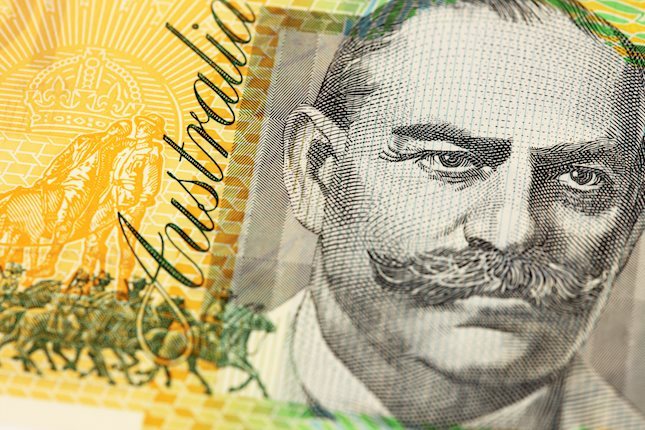- The Canadian Dollar ended the trading week flat against the US Dollar.
- A Retail Sales beat sees little positive momentum for the Loonie as markets remain USD-focused.
- Steady Crude Oil prices aren’t hurting the CAD, but aren’t helping it either.
The Canadian Dollar (CAD) is seeing some minor lift on Friday, but selling pressure remains and intraday action is steadily pushing the USD/CAD back to its opening bids.
Canada Retail Sales beat expectations but still came in soft nonetheless and the 1.3700 price point remains too attractive a level for US Dollar (USD) bidders to abandon.
Daily Digest Market Movers: Canadian Dollar cycling this week’s popular price level as markets follow USD flows
- Canada Retail Sales beat forecasts, but still flubbed the previous printing.
- August’s CAD Retail Sales declined 0.1%, beating the forecast -0.3%.
- Despite the forecast beat, data is still soft, coming in below previous as consumer spending weakens.
- July’s data was revised higher from 0.3% to 0.4%, widening the data gap after the fact.
- Thursday’s outing from Federal Reserve (Fed) Chairman Jerome Powell continues to wriggle through markets as investors remain leery of the Fed’s dot plot.
- Market participants fearing a higher, longer interest rate cycle from the Fed are currently setting themselves up for disappointment.
- Fed officials continue to speak up their willingness to keep rates high.
- The October US Preliminary Purchasing Manager Index (PMI) next Tuesday will be the next data to hit the USD/CAD pair.
- Forex Today: A busy week ahead, between data and geopolitics
Technical Analysis: USD/CAD refusing to move too far from 1.3700 as Canadian Dollar takes two steps forward and one step back
The USD/CAD opened up Friday’s trading near 1.3716, dipping to a daily low of 1.3670 as the Loonie gains inches rather than miles on the Greenback, but the pair continues to see play close to the 1.3700 handle, closing out the Friday trading session flat at 1.3715.
Daily candlesticks see the USD/CAD trading into near-term highs as a constraining market stance weighs on the pair. Long-term resistance comes from a descending trendline from early 2020’s panic highs of 1.4650, while near-term chart action has the 50-day Simple Moving Average (SMA) rising to provide technical support from 1.3575.
A firm break higher leaves the pair open to make a challenge of 1.3800 near March’s swing highs, while the downside will have to tangle with the 200-day SMA before revisiting lows near 1.3400 from September.
Canadian Dollar FAQs
What key factors drive the Canadian Dollar?
The key factors driving the Canadian Dollar (CAD) are the level of interest rates set by the Bank of Canada (BoC), the price of Oil, Canada’s largest export, the health of its economy, inflation and the Trade Balance, which is the difference between the value of Canada’s exports versus its imports. Other factors include market sentiment – whether investors are taking on more risky assets (risk-on) or seeking safe-havens (risk-off) – with risk-on being CAD-positive. As its largest trading partner, the health of the US economy is also a key factor influencing the Canadian Dollar.
How do the decisions of the Bank of Canada impact the Canadian Dollar?
The Bank of Canada (BoC) has a significant influence on the Canadian Dollar by setting the level of interest rates that banks can lend to one another. This influences the level of interest rates for everyone. The main goal of the BoC is to maintain inflation at 1-3% by adjusting interest rates up or down. Relatively higher interest rates tend to be positive for the CAD. The Bank of Canada can also use quantitative easing and tightening to influence credit conditions, with the former CAD-negative and the latter CAD-positive.
How does the price of Oil impact the Canadian Dollar?
The price of Oil is a key factor impacting the value of the Canadian Dollar. Petroleum is Canada’s biggest export, so Oil price tends to have an immediate impact on the CAD value. Generally, if Oil price rises CAD also goes up, as aggregate demand for the currency increases. The opposite is the case if the price of Oil falls. Higher Oil prices also tend to result in a greater likelihood of a positive Trade Balance, which is also supportive of the CAD.
How does inflation data impact the value of the Canadian Dollar?
While inflation had always traditionally been thought of as a negative factor for a currency since it lowers the value of money, the opposite has actually been the case in modern times with the relaxation of cross-border capital controls. Higher inflation tends to lead central banks to put up interest rates which attracts more capital inflows from global investors seeking a lucrative place to keep their money. This increases demand for the local currency, which in Canada’s case is the Canadian Dollar.
How does economic data influence the value of the Canadian Dollar?
Macroeconomic data releases gauge the health of the economy and can have an impact on the Canadian Dollar. Indicators such as GDP, Manufacturing and Services PMIs, employment, and consumer sentiment surveys can all influence the direction of the CAD. A strong economy is good for the Canadian Dollar. Not only does it attract more foreign investment but it may encourage the Bank of Canada to put up interest rates, leading to a stronger currency. If economic data is weak, however, the CAD is likely to fall.
Information on these pages contains forward-looking statements that involve risks and uncertainties. Markets and instruments profiled on this page are for informational purposes only and should not in any way come across as a recommendation to buy or sell in these assets. You should do your own thorough research before making any investment decisions. FXStreet does not in any way guarantee that this information is free from mistakes, errors, or material misstatements. It also does not guarantee that this information is of a timely nature. Investing in Open Markets involves a great deal of risk, including the loss of all or a portion of your investment, as well as emotional distress. All risks, losses and costs associated with investing, including total loss of principal, are your responsibility. The views and opinions expressed in this article are those of the authors and do not necessarily reflect the official policy or position of FXStreet nor its advertisers. The author will not be held responsible for information that is found at the end of links posted on this page.
If not otherwise explicitly mentioned in the body of the article, at the time of writing, the author has no position in any stock mentioned in this article and no business relationship with any company mentioned. The author has not received compensation for writing this article, other than from FXStreet.
FXStreet and the author do not provide personalized recommendations. The author makes no representations as to the accuracy, completeness, or suitability of this information. FXStreet and the author will not be liable for any errors, omissions or any losses, injuries or damages arising from this information and its display or use. Errors and omissions excepted.
The author and FXStreet are not registered investment advisors and nothing in this article is intended to be investment advice.
Recommended content
Editors’ Picks

AUD/USD holds higher ground near 0.6600 after strong China's Caixin Services PMI
AUD/USD holds higher ground near the 0.6600 mark early Tuesday. Strong China's Caixin Services PMI data for October underpins the Aussie amid a modest US Dollar uptick and a tepid risk tone. Traders remain reluctant ahead of the RBA policy decision and the US presidential election.

USD/JPY rises toward 152.50, despite strong Japan's PMI, cautious mood
USD/JPY has picked up fresh bids to test 152.50 in Asian trading on Tuesday, tracking the renewed US Dollar strength. The pair shrugs off strong Japanese PMI data and a cautious market mood. Traders remain wary as Americans head to polls this Tuesday.

Gold traders appear non-committal on the US election day
Gold price is miring in five-day lows near $2,730 in Asian trading on Tuesday, lacking a clear direction. Traders remain wary and refrain from placing fresh bets on Gold price on the US presidential election day.

Bitcoin ETFs beat Gold ETFs with 65% gain since launch
Bitcoin ETFs have reshaped the digital asset investment landscape since their approval in January. Their total assets under management climbed over $70 billion during the weekend, placing them ahead of other investment products, including gold.

US presidential election outcome: What could it mean for the US Dollar? Premium
The US Dollar has regained lost momentum against its six major rivals at the beginning of the final quarter of 2024, as tensions mount ahead of the highly anticipated United States Presidential election due on November 5.

Best Forex Brokers with Low Spreads
VERIFIED Low spreads are crucial for reducing trading costs. Explore top Forex brokers offering competitive spreads and high leverage. Compare options for EUR/USD, GBP/USD, USD/JPY, and Gold.